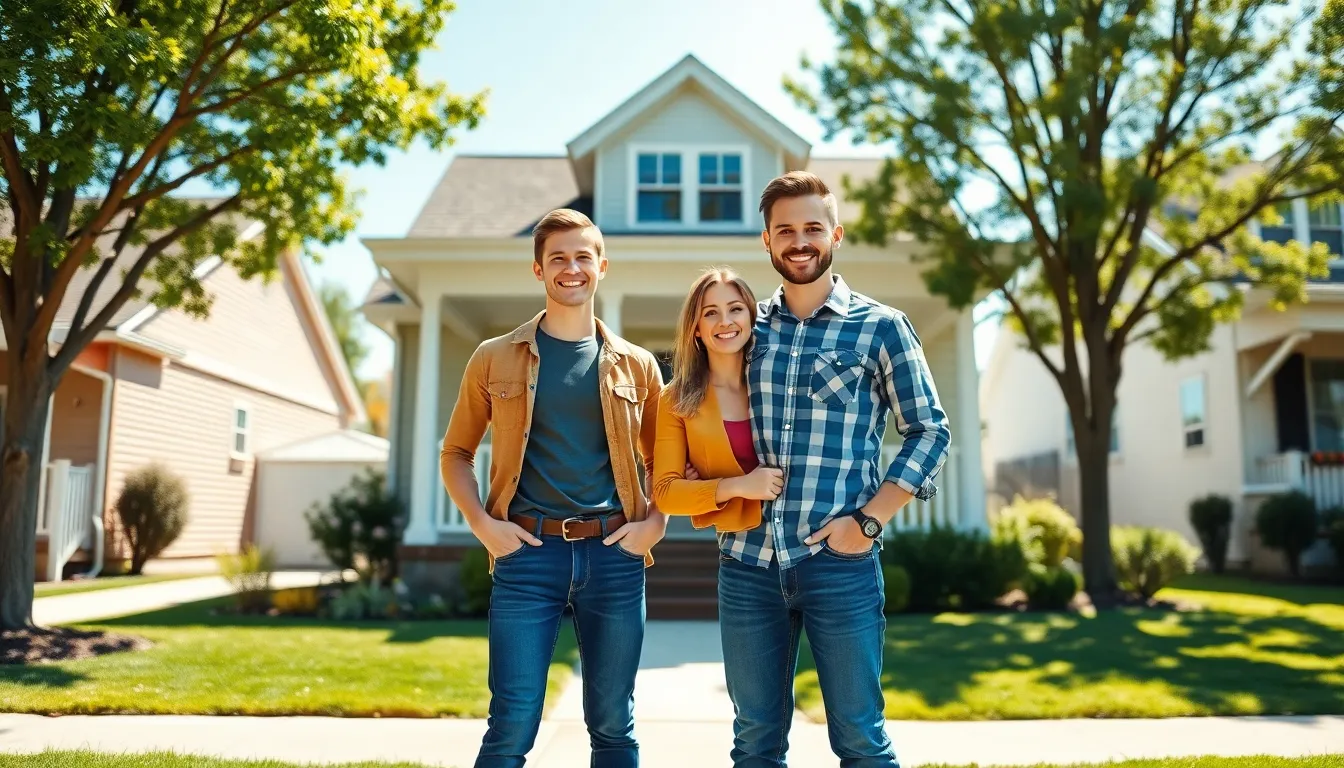Picture this: You’re ready to buy your first home, but the treasure map to financing feels more like a cryptic riddle. Enter the first community mortgage. This financial gem not only offers a unique path to homeownership, but it’s designed to benefit you, your community, and the wallet you carry. In a world where every penny counts, a community mortgage can feel like hitting the jackpot. Let’s unravel the mystery of first community mortgages and see why they might just be your golden ticket.
Table of Contents
ToggleUnderstanding Community Mortgages

First community mortgages are a type of mortgage specifically designed to promote homeownership within a community. Unlike conventional financing options, these mortgages often come with lower interest rates and less stringent credit requirements, making them more accessible to a broader range of individuals. At their core, they aim to foster economic growth in local neighborhoods while providing residents the opportunity to secure stable housing.
This model works by pooling resources from community members or local banks to create a fund dedicated to home loans. The idea is simple: when communities come together, they can provide support for their own members, reducing the reliance on larger, more impersonal financial institutions. The result? A network of support that not only extends affordable housing options but also strengthens community ties.
The Importance of Community-Based Lending
Community-based lending plays a vital role in enhancing local economies. When individuals invest in their neighborhoods, it creates a ripple effect, fostering growth and stability. Homes built using community mortgages help strengthen local property values, boost businesses, and create jobs. Essentially, these loans serve as a catalyst for revitalization in areas that need it most.
Also, community-driven initiatives often lead to more informed and engaged borrowers. Because local lenders understand the unique challenges and benefits of their communities, they can provide tailored advice that often gets lost in larger, faceless institutions. This relationship fosters trust and promotes financial literacy among residents, empowering them to make informed decisions about their futures.
How First Community Mortgages Work
Understanding how first community mortgages operate can demystify the process for potential homeowners. The initial step involves identifying a local community lender or organization that offers such mortgages. These lenders typically collaborate with local governments and non-profits to develop programs aimed at assisting homebuyers.
Once an interested buyer contacts a lender, they undergo a typical mortgage application process, including credit checks and financial assessments. What sets community mortgages apart is their willingness to consider non-traditional metrics. This means that a stable job history and the ability to make payments often hold more weight than an exact credit score.
After approval, funds from the community mortgage are used to cover down payments and mortgage costs, typically supported by favorable interest rates tailored to the borrower’s financial situation. Eventually, the system encourages responsible homeownership while offering borrowers a path that might otherwise be inaccessible.
Eligibility Requirements for First Community Mortgages
Eligibility for first community mortgages can vary based on the specific program and provider. But, common requirements often include:
- Income Limits: Many community mortgages have restrictions based on the borrower’s income to ensure the loans support those in specific economic brackets.
- Credit History: While traditional mortgages may require pristine credit, community mortgages often allow first-time buyers with less-than-perfect scores to qualify.
- Home Location: Properties financed through community mortgages usually must be located within designated areas that qualify for the program.
Benefits of Choosing a First Community Mortgage
Choosing a first community mortgage comes with numerous perks. For starters, homebuyers often enjoy lower interest rates, providing significant savings over the life of the loan. Also, the relaxed credit requirements make these mortgages accessible to those who might feel locked out of the housing market.
Community-focused lenders are also deeply invested in their borrowers’ success. They can provide resources for financial education, homebuyer workshops, and ongoing support long after closing. This creates an environment where borrowers feel encouraged and empowered throughout their homeownership journey.
Challenges and Considerations
Even though the numerous benefits, first community mortgages also present certain challenges. One notable aspect is the limited availability. Not all communities offer these programs, which can be frustrating for eager buyers. Besides, since many community mortgages come with income caps, they might not always accommodate those with higher earnings who could benefit from the program.
Another consideration involves the specific property types that qualify under community mortgage programs. Borrowers might find that they cannot purchase the home of their dreams if it falls outside the program’s requirements.
Comparing First Community Mortgages with Traditional Mortgages
When weighing the pros and cons, it’s essential to compare community mortgages with traditional options. Traditional mortgages often provide larger loan amounts and more flexibility about property types. But, they can come with higher interest rates and more stringent application processes, leaving many potential buyers in the lurch.
Community mortgages typically emphasize affordability and accessibility, making homeownership a reality for many. Eventually, the right choice depends on individual financial situations and personal goals.








